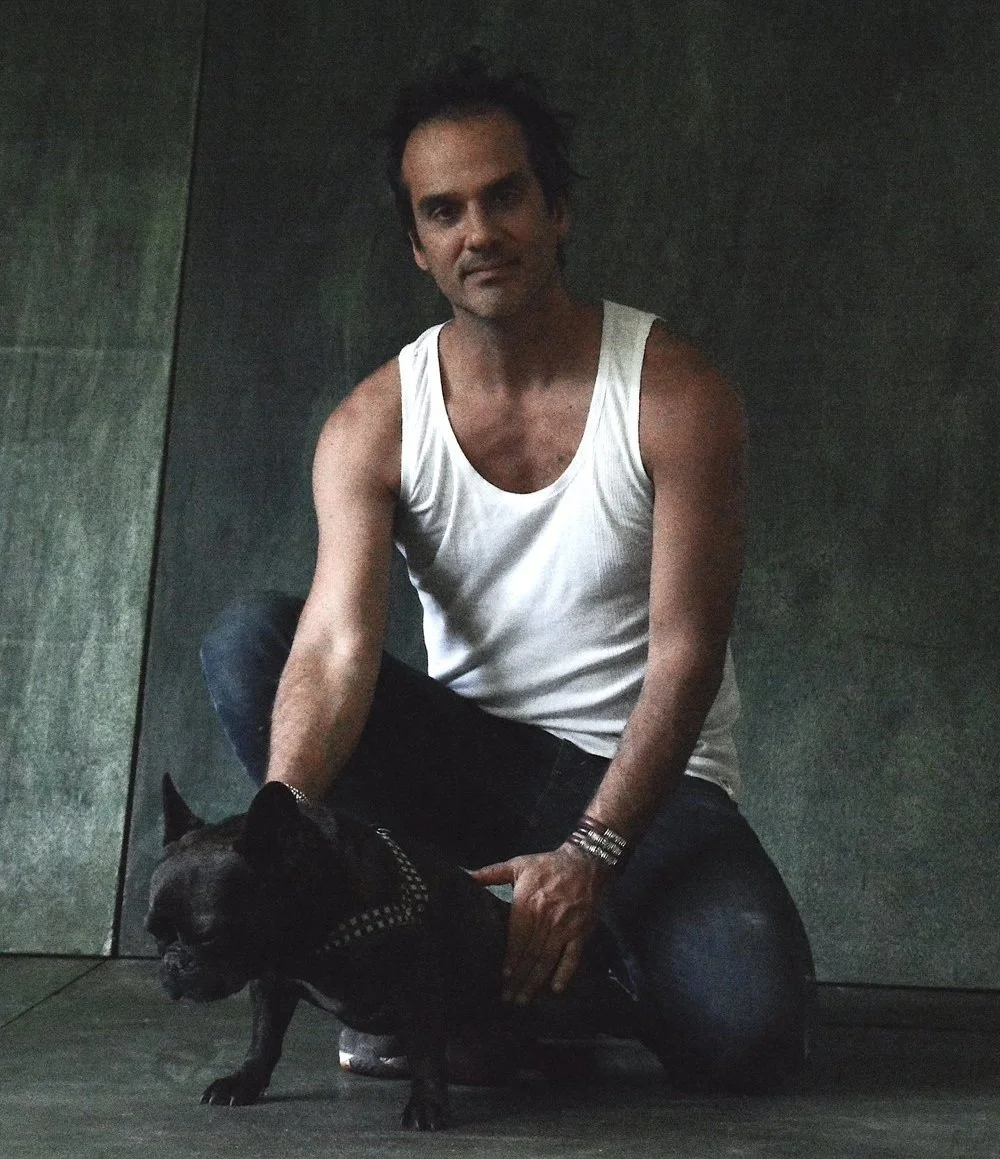
Miguel Andrade Valdez in Mexico City
La piel
Between us and the world, our skin embraces us, protects us from evil and holds us together like a bag of bones, blood, guts and neurons. Our skin is the house our body built that our mind started to fill with memories, emotions, foibles, fads and dreams. Room by room, it stores and archives, losing the battle against clutter that piles up in the attic. Where to put our teenage dreams? The books we read? Physical memories of hands held, someone else’s skin?
This exhibition is the third in a series that was initiated in 2021 at Proyecto Nasal in Guayaquil with Empty Streets and continued with The Whiteness of the Whale at Ginsberg in Lima 2022. It’s been a slow thematic movement, from the city and the empty streets of Lima during the Pandemic, the Ocean and Melville’s great whale, to home and family, and now back into the very physicality of being a human, into body and mind.
For Miguel Andrade Valdez it has also been a move away from the white skies of Lima to the clear light of the Andes in the Sacred Valley in Peru. It’s a voyage back in time, to his beginning as a young painter.
After having focused on sculpture and installations for many years, a return to painting and figuration might come as a surprise but both have been present for some time in Andrade Valdez’s wall objects, such as variations of Sad Face and sculptures like Falling Man. In this group of work, figuration emerges in a series of large, white drawings on canvas, manifesting in fragmented bodies and landscapes, and in another series consisting of small jewel-like paintings, faces and eyes peer out from dense vegetation in greens and browns. The large drawings with motives such as The Mountain, The Man and The Tree (Trunk), are archetypal symbols tattooed into the canvases, like all symbols their meaning reveals itself differently for each one of us. But we are all of this, bodily mess, emotional junk, brainy storms.
The paintings and drawings circle around an empty house, in fact, two empty houses, in the form of an architectural model in adobe placed on a table. Is it a model for a new beginning? The double house, complete with facial features and connected by a bridge, or a tongue, echoes the famous twin houses of Frida Kahlo and Diego Rivera by painter and architect Juan O’Gorman. Is it a home split into two, one reflecting the other, before and after The Fall of the House of Usher (1.) or engaged in a last kiss? Into the body and out into the mind, a vast landscape on which the sun cast deep shadows on the mountains, an endless pelagic wandering, ocean trenches and volcanoes, a Borgesian labyrinth, and 20,000 leagues under the sea (2.) - this is a voyage that few dare to undertake. One tends to end up there almost by accident, knocked off one’s vessel or slipping and sliding down a rabbit hole. Poe’s Gothic novel starts with an epigram: "Son coeur est un luth suspendu; /Sitot qu'on le touche il resonne". In Shakespearian times the sound of the lute was held to have healing and magical powers, today we might turn to painting to open up our minds, and under the skin, make our bodies pulse and tingle. Magic.
Essay by Sofia Bertilsson
The Fall of the House of Usher is a Gothic short story from 1839 by Edgar Allan Poe that has been turned into several films.
Twenty Thousand Leagues Under the Seas is the title of Jules Verne’s science fiction adventure novel published in 1869 in which a scientist ends up on the submarine Nautilus “piloted” by Captain Nemo.
The epigram is from French songwriter Jean Pierre de Béranger Le Refus but Poe subtly changed mon coeur into son coeur: "Son coeur est un luth suspendu;/Sitot qu'on le touche il resonne." In English translation it reads: “His heart is a tightened lute; as soon as one touches it, it echoes” or "His heart is a suspended lute, as soon as it is touched, it resounds"
https://www.instagram.com/proyectonasal/
About Miguel Andrade Valdez
Miguel Andrade Valdez is an artist based in Lima, Peru, who works in the borderland between sculpture, design and architecture. In his work, he reflects and comments on architecture and society, and investigates the cityscape and vernacular sculptures found in Lima and in many other Latin American cities. He sees sculpture as an archeology of our times and architecture as a representation of time. In recent years he has started to merge inspiration from modern architecture with the pre-Colombian Huacas of Peru into sculptural works and has redefined his role as an artist to include architecture and design, notably by forming the design studio Taller Tarapacá that combines heritage craft with contemporary design.
Andrade Valdez also works with drawing and painting creating works that takes us into the human psyche. At the core of his work is the complex relation between the individual and the state, laid out already in Plato’s Socratic dialogue The Republic from the 4th C BC, and pervading human history. His work is research based, but it’s a type of investigation that only can be made through the artistic process, and often involves collaboration.
Images: Courtesy Miguel Andrade Valdez and NASAL, CDMX




